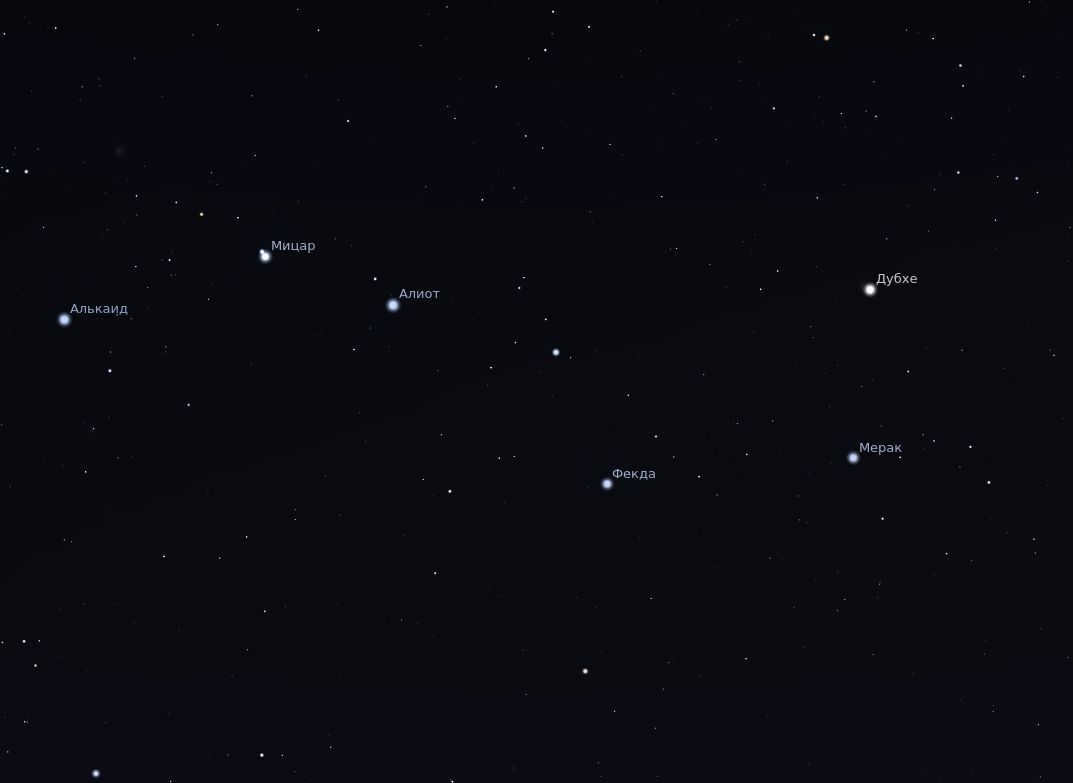
The Great Bear (also known as the Ladle, the Cart, the Plough) is a constellation, which means it is a group of stars that form a recognizable pattern in the sky and has a name that is universally recognized. The constellation is located within the Great Bear and consists of seven stars. In general, constellations are made up of multiple stars, but an asterism like the Great Bear typically includes only a few stars from the larger constellation or from nearby constellations. The Big Dipper is a prime example of this.
Description [ edit ]
Overview [ edit ]
Summary [ edit ]
Explanation [ edit ]
Background [ edit ]
The stars within the constellation Ursa Major, commonly known as the Big Dipper, each have their own unique names. These names, including Alioth, Dubhe, Benetnash, Mizar, Merak, Phecda, and Megrez[1], have been designated since the time of Arabic astronomy. Among these stars, Dubhe shines the brightest, while Megrez is the faintest, situated at the base of the handle.
Despite the significant distances that separate them, Alioth, Mizar, Merak, Phecda, and Megrez all share common characteristics. They move in the same direction at a velocity of approximately 10 km/s, possess similar ages and chemical compositions. These similarities suggest that they originated from a single gas and dust cloud, formerly constituting a single star cluster. Today, these celestial objects belong to a moving group of stars within the Big Dipper[2]. The central core of this group is located 80 light-years away from Earth.
Alternative Names for Asterisms in Different Peoples and Cultures [ edit ]
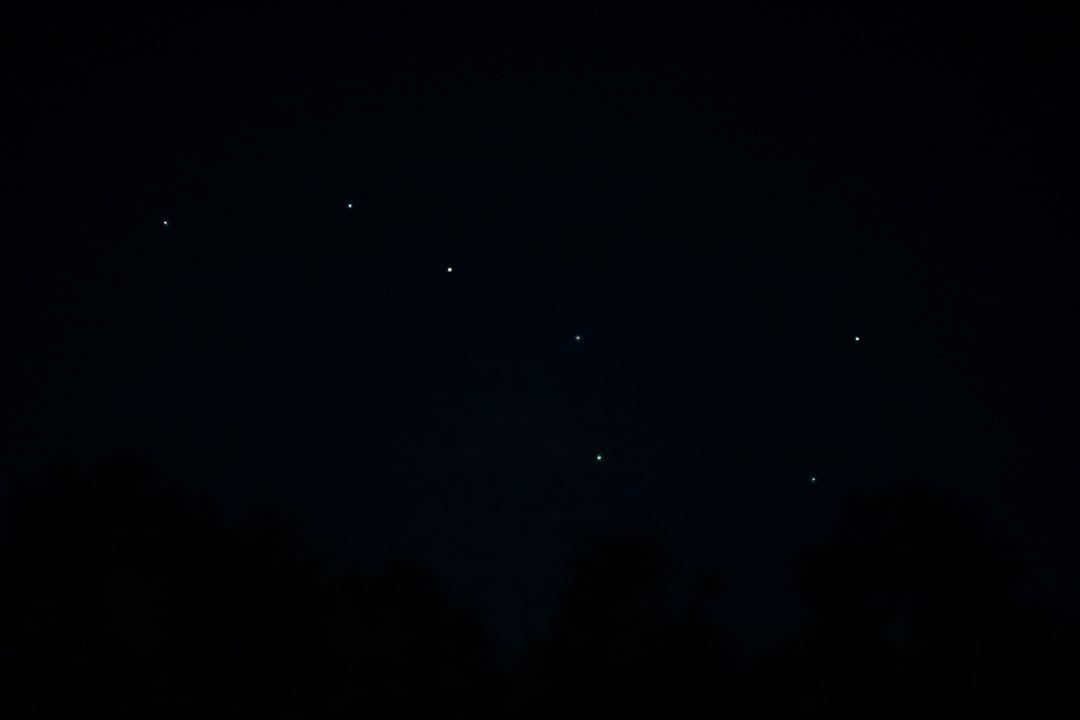
Due to its size and prominent position in the sky, the Big Dipper constellation was recognized by many ancient civilizations and cultures.
As early as 5,000 B.C., the ancient Egyptians observed the Big Dipper and referred to it as the “Bull’s Thigh.” In ancient China, the seven bright stars were known as the Emperor Shandi’s Carriage, while the American Indians called it the Great Bear [4].
Fascinating items [ edit ]
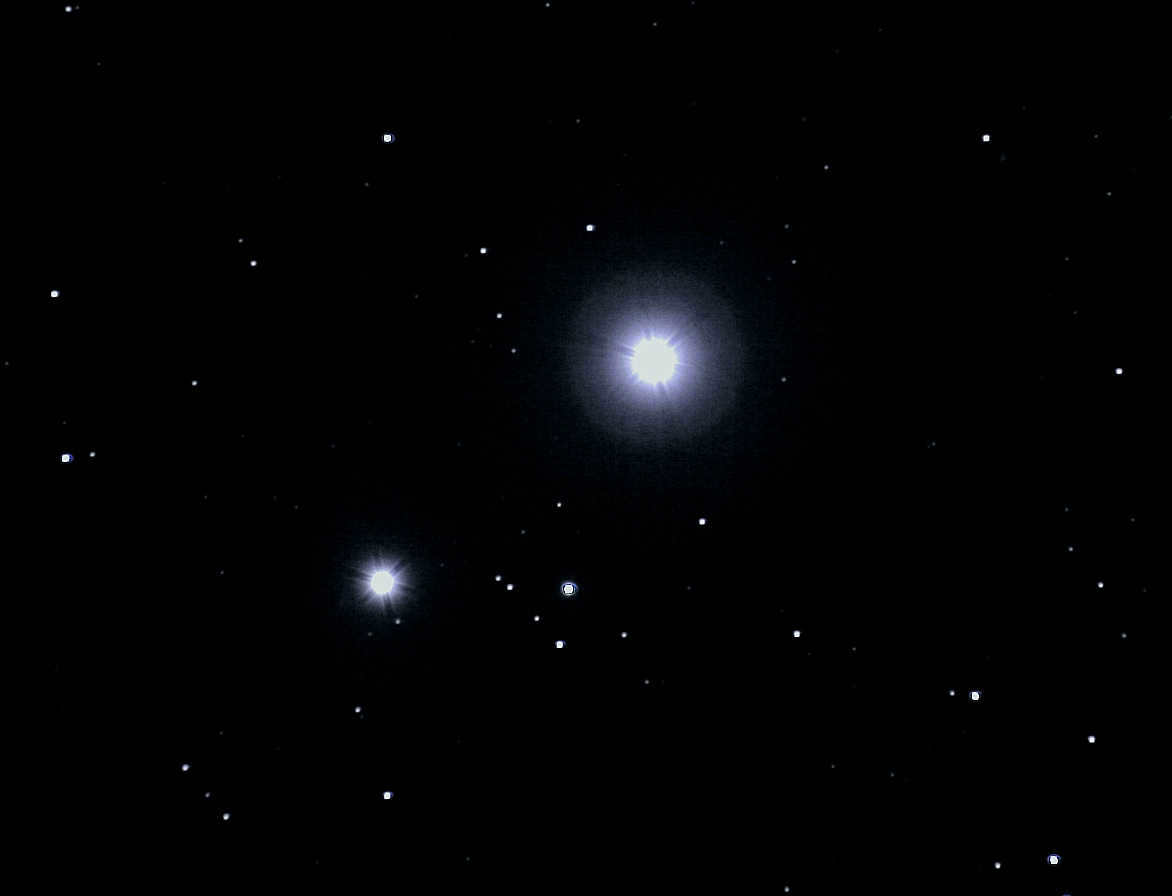
- Mizar, which is the second star from the end of the handle of the Big Dipper, is a multiple system composed of six stars. One of these stars, Alcor, is positioned at such a distance from Mizar and the other stars that it can be seen alongside Mizar with the naked eye at a short distance[5]. When observed through a telescope, Mizar itself appears as a double star, making the Mizar-Alcor pair a popular choice for amateur astronomers to observe.
- Dubhe, also known as Alpha of the Big Dipper, is a bright double star that is considered to be navigational because it is easy to locate Polaris (using Merak as a reference). The companion stars in the Dubhe system are so close together that it is impossible to distinguish them when observed through a telescope.
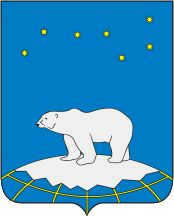
According to reports, folklore stories have made references to the asterism for thousands of years, as highlighted by ethnographer Yuri Beryozkin. The image of the Big Dipper has been recognized by various cultures, including those in the North, African tribes, and Turkic peoples [6].
Among the Mongolian people, the Big Dipper, also known as the Ladle, holds great significance and is associated with important calendar rituals [7].
The asterism can be found on the flag of Alaska [8] and the coat of arms of the Russian urban settlement of Dickson [9].
“Twilight. The Big Dipper” is a renowned artwork by Rinat Voligamsi (Ismagilov), showcasing the presence of the famous constellation. In this painting, Soviet soldiers can be seen taking a break and smoking, holding their three-line rifles. Interestingly, the glow from their cigarettes forms an exact replication of the Big Dipper’s distinctive shape [10].
Sources [ edit ]
References [ edit ]
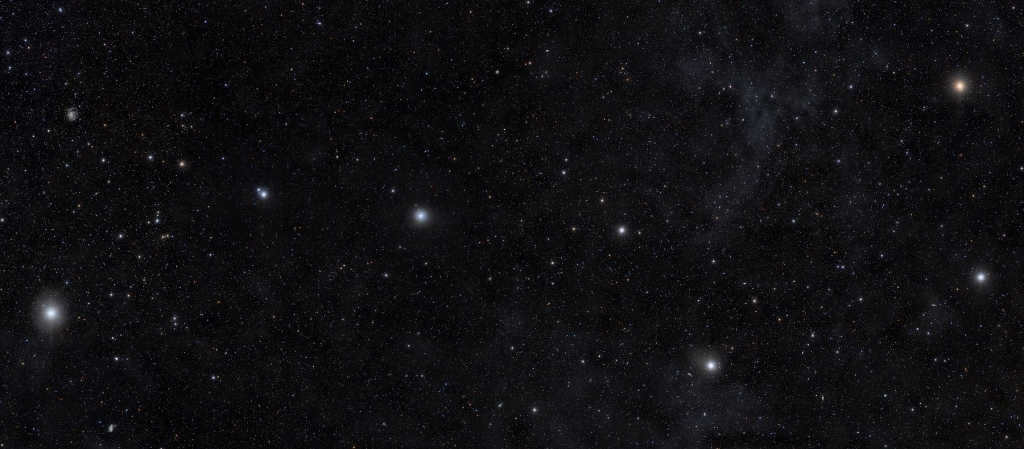
The Big Dipper constellation is known for being one of the largest constellations in terms of area, ranking third after Hydra and Virgo. With over 200 stars in this section of the sky, it is possible to distinguish up to 125 of them with the naked eye, particularly on a moonless night away from city lights.
The stars within the Big Dipper constellation form the well-known asterism known as the Big Dipper, which is what makes this constellation so easily recognizable.
Originally, people associated this area of the sky solely with the Big Dipper asterism, so most of the existing names were fitting:
- The ancient Greeks referred to the constellation as “Helica”, which means “shell”, or sometimes “Arctos”, which means “bear”. According to certain Greek writers, the Big Dipper served as a guide for the ancient Greeks. According to Greek mythology, Zeus transformed two Cretan nymphs into bears in order to conceal them from Cronus. Another version states that the nymph Callisto hid from her sister and wife, Hera.
- The Sanskrit name for the constellation is “Sapta Rishi”, which translates to “seven sages”. This refers to the seven sons of the god Brahma, who are believed to be the ancestors of all beings and the creators of the universe. In Indian astronomy, these seven stars are known as the sages.
- The constellation is called “Seven Robbers” (Zhetikarakshy) by Kazakh nomads. According to legend, the supreme sky deity Tengri tied his two horses to the Iron Peg. The Iron Stake (“Temirkazyk”) represents Polaris, while the two stars close to it (likely Polaris A and Polaris B) represent the horses. The seven stars of the Big Bucket are the robbers who constantly circle around the horses, attempting to steal them.
- Chinese astronomers referred to the constellation as “Beidou” or “Northern Bucket” due to the fact that the handle of the Big Bucket pointed towards the North Pole during those times.
- In Slavic culture, this constellation was known as the “Elk” as it was initially linked to this majestic animal. In ancient Russia, the Big Dipper was also called the “Horse on a Pin” since it resembled a horse pinned to Polaris, continually revolving around it – like a pin.
Stars in the Great Bear Constellation
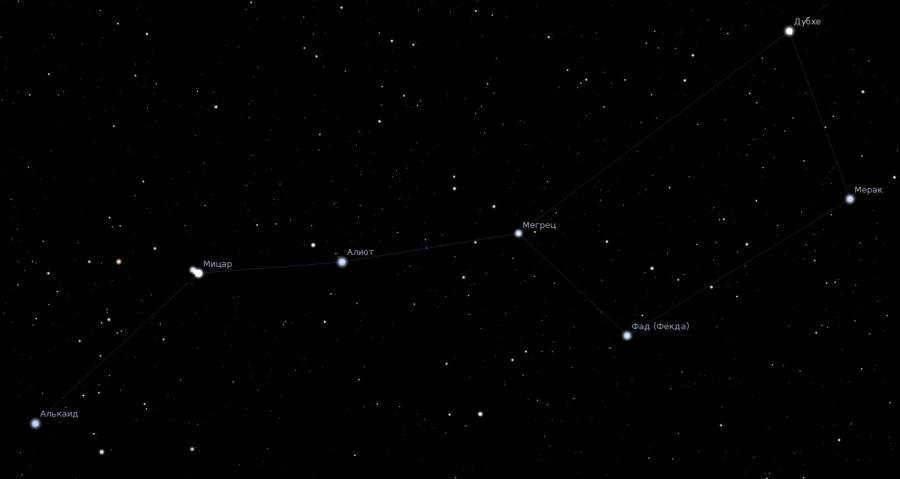
The Big Dipper is composed of seven bright and large stars in the Constellation of the Big Dipper:
- Dubhe (Alpha of the Big Dipper), derives its name from the Arabic expression, “the back of the big bear.” It is the second most luminous star in the constellation. In reality, Dubhe is a multiple star, consisting of three stars: an orange giant (the preceding phase of a red giant) and two main sequence stars.
- Merak (β) is Arabic for “loins” or “groin”. If you draw a straight line through the stars Merak and Dubhe, extending it northward, it will pass through Polaris. Hence, these two stars are sometimes referred to as Pointers.
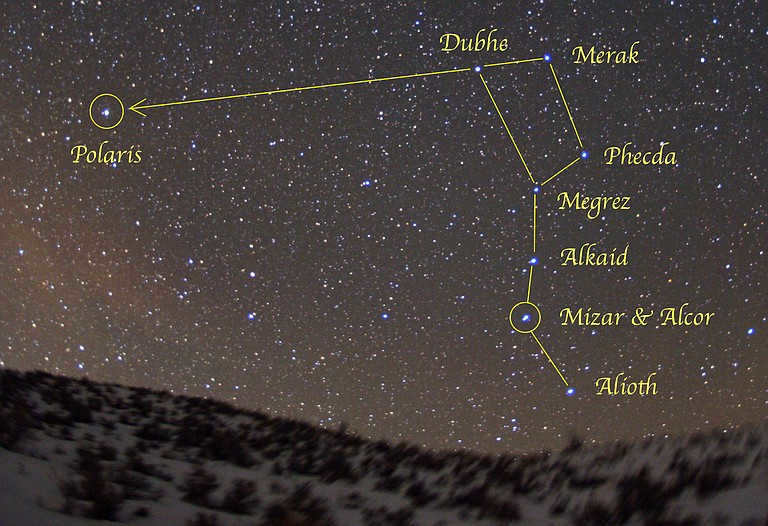
The two stars that point towards Polaris are Merak and Dubhe
- Thekda (γ) – referred to as the “thigh.”
- Megretz (δ) – known as the “base of the tail.” It is the least bright star among the stars of the Big Bucket. Megretz is accompanied by two companion stars, Delta Ursae Majoris A and B.
- Aliot (ε) – nicknamed the “curd.” This is the brightest star in the constellation, with an apparent stellar magnitude of 1.76.
- Mizar (ζ) is derived from the Arabic word meaning “belt”. In close proximity to Mizar lies another star called “Alcor”. It is interesting to note that the ability to differentiate between these two stars is attributed to excellent visual acuity (with a maximum of 1 diopter of myopia). According to ancient legends, young men with this talent were recruited into the Egyptian army. Other versions suggest that it was Indian hunters or Greek archers. It is worth mentioning that a recent study conducted in 2009 discovered that Mizar and Alcor actually form a sixfold system, with the binary stars Mizar A and B orbiting around the binary star Alcor.
- Benetnash (η) or alternatively known as Alkaid. It is the third most luminous star in the constellation Ursa Major. The Arabic phrase “Al-kaid banat nash” translates to “leader of the mourners,” which is a poetic representation of this constellation in Arab folklore.
Related Resources
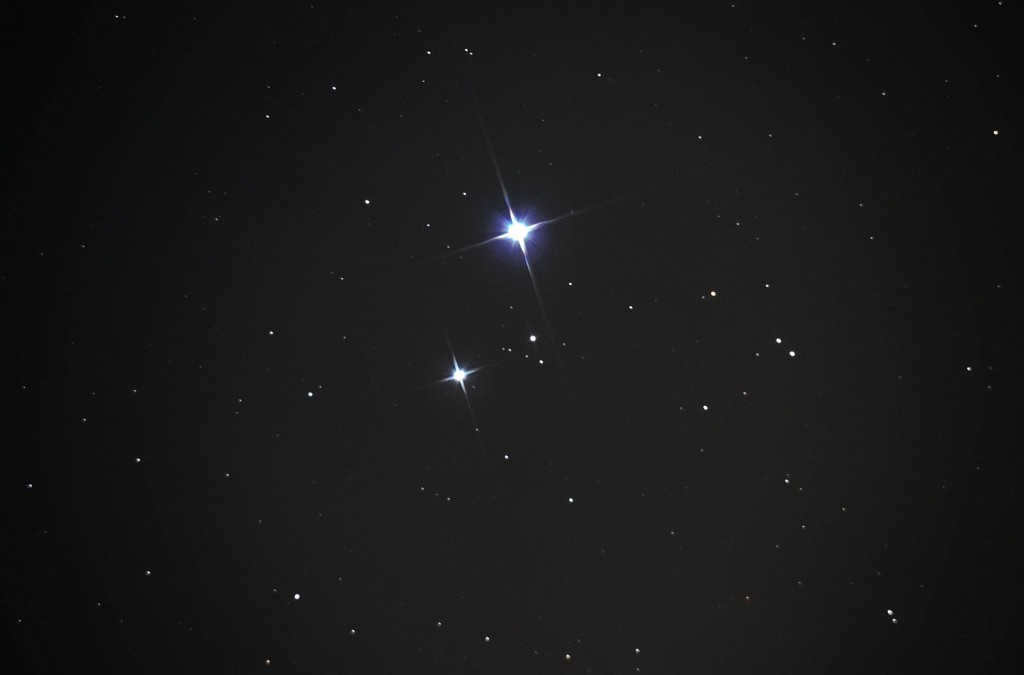
It is worth mentioning that the Big Dipper asterism is also known as “The Funeral Procession”. In this interpretation, the three stars represent mourners, led by a leader (“Al-qaid banat nash”), followed by a funeral stretcher.
On average, the stars that make up the Big Dipper are about 120 light-years away from Earth. These stars are not the brightest in our sky, with an average stellar magnitude close to 2m. However, they are still easily recognizable in the night sky.
There exists a famous moving cluster within the constellation Ursa Major, known as the Big Dipper. This cluster is composed of 14 stars, with 13 of them being part of the Big Dipper constellation, and the other 5 forming the Big Bucket (Merak, Fekda, Megrets, Aliot, and Mitsar). The majority of the stars in this group move together in one direction, however, Dubhe and Benetnasha, the remaining two stars in the Bucket, move in the opposite direction. This differential motion causes the shape of the Big Dipper to gradually change over a period of 100,000 years.
Interestingly, a study conducted in 2009 revealed that Mizar and Alcor, two stars in the Big Dipper, are actually a six-star system. It was discovered that Mizar A and B are binary stars orbiting the double star Alcor. This finding is not surprising, as stars are often born in pairs or clusters.
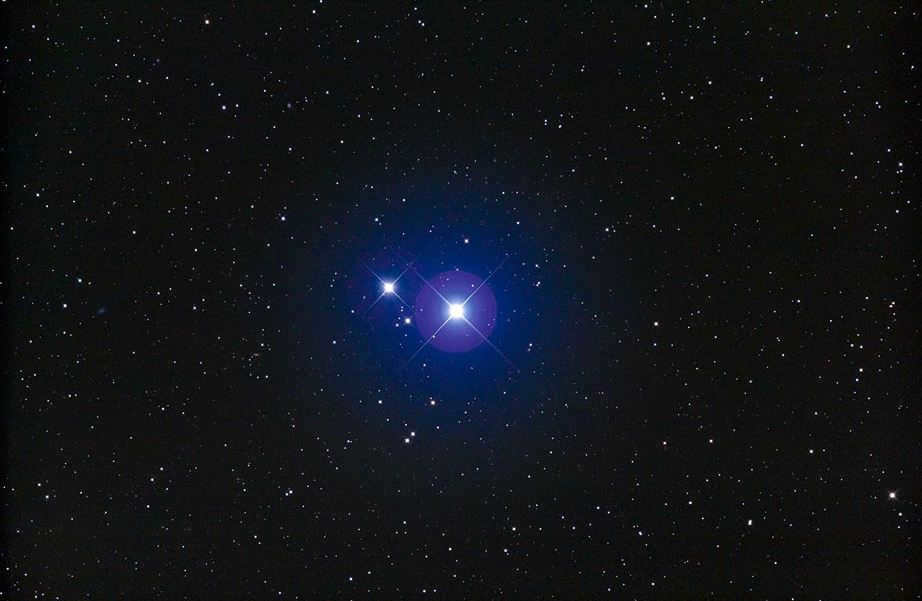
Additional objects within the constellation of the Big Dipper
Besides the Big Dipper, there is also a formation known as the Three Leaps of the Gazelle, which consists of three sets of stars within the Big Dipper. These sets are:
- Alula North South (ν and ξ),
- Taniyah North and South (λ and μ),
- Talitha North and South (ι and κ).
In close proximity to Alula North is a red dwarf called Laland 21185, which is not typically visible to the naked eye. However, it is the sixth nearest star system to the Sun, closer than the stars Sirius A and B.
Avid followers of observational astronomy know that this particular constellation houses the Helix galaxy, also known as M101, as well as the galaxies M81 and M82. The latter two galaxies are the core of what is believed to be the closest group of galaxies, situated approximately 7 million light-years away. In contrast to these far-off entities, the astronomical phenomenon known as M 97, or the “Owl,” is found within the Milky Way, much closer in proximity by hundreds of times. The “Owl” is recognized as one of the largest planetary nebulae.
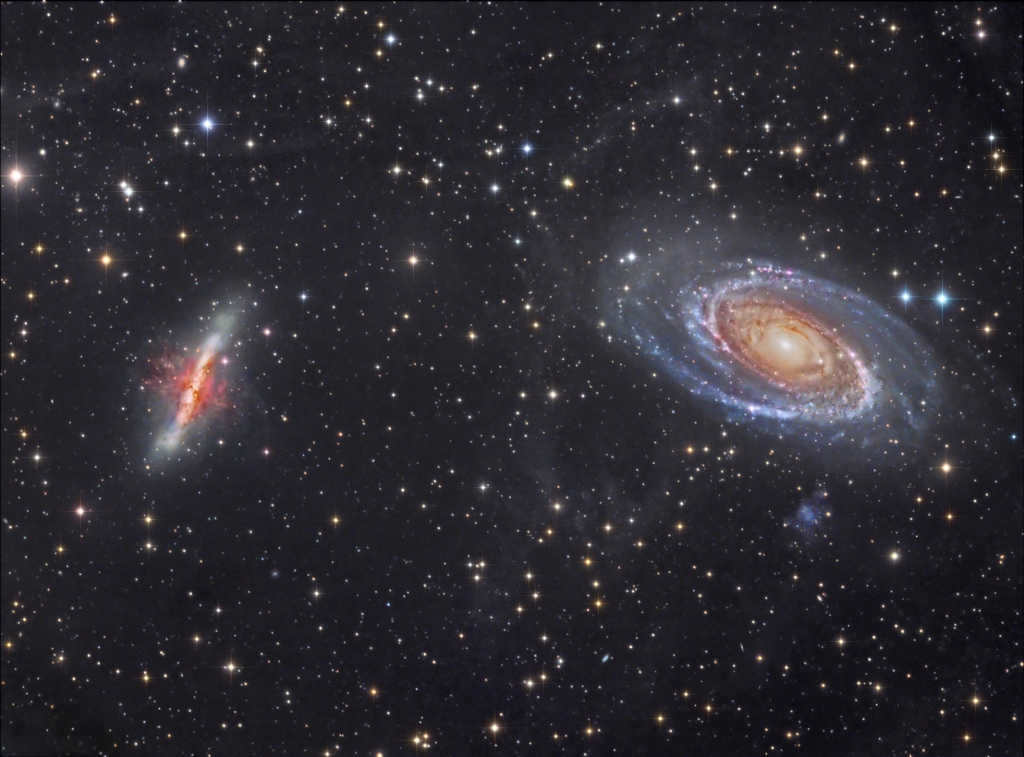
Between the first and second “gazelle jump”, there is a small yellow dwarf that can be observed with the help of optics. This dwarf is similar to our Sun and is located at position 47. From 2000 to 2010, scientists have identified three gas giants that orbit around this star. The star system is also highly similar to our solar system and is ranked 72nd on the list of potential candidates for Earth-like planets. This ranking is based on the ongoing NASA Terrestrial Planet Finder mission. Therefore, this constellation holds significant interest for astronomy enthusiasts.
In the constellation, two of the most distant galaxies were discovered in 2013 and 2016, namely z8 GND 5296 and GN-z11, respectively. The light from these galaxies was recorded by scientists and is estimated to have traveled for 13.02 billion years (z8 GND 5296) and 13.4 billion years (GN-z11).
One interesting fact unrelated to astronomy is that the Big Bucket is featured on the flag of White Sea Karelia, while on the flag of Alaska, it is depicted alongside the polar star.
Shown on the left is the flag of Alaska, and on the right is the flag of White Sea Karelia.
The constellations known as the Big Dipper and Little Dipper are widely recognized in the night sky and can be easily identified even by those with little knowledge of astronomy. These constellations hold significant interest and value for scientists.
Description and Characteristics of the Big Dipper
The Big Dipper, also referred to as the “Ursa Major” or “Great Bear,” is a prominent constellation that covers approximately 3% to 4% of the northern hemisphere’s sky. The Big Dipper itself spans an area of about 1279.66 square degrees.
It is worth noting that this constellation has been known to humanity since ancient times, with references to it dating back to the 2nd century BC in the works of early scientists.
There are other celestial constellations surrounding the Big Dipper, such as the Dragon, Giraffe, Small Lion, Lion, Hound Dogs, and Veronica’s Hair.
This collection of constellations includes seven highly luminous stars that capture the observer’s interest. These stars are Dubhe (Alpha), Feqda (Gamma), Merak (Beta), Megrez (Delta), Aliot (Epsilon), Mitsar (Zeta), and Alcaide (Eta).
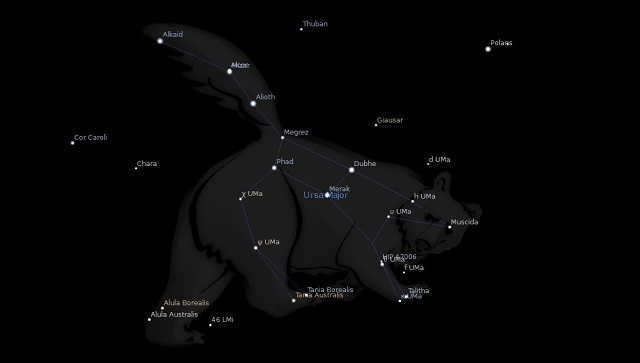
This constellation is made up of seven stars and is known as the “body” of the star beast. Scientists have assigned meanings to each star based on their Arabic translations:
- Dubhe – represents the back or spine of the beast.
- Merak – symbolizes the loins or groin.
- Fekda – signifies the thigh.
- Megretz – marks the base or beginning of the tail.
- Aliot – represents the rump.
- Mitsar – symbolizes the belt.
- Alkaid (Benetash) – represents the nose or muzzle. The name itself translates to “leader”.
Optimal Time for Observing the Big Dipper
Opinions on the best time to observe the Big Dipper vary greatly among scientists, amateur astronomers, and travelers. This discrepancy is largely due to the geographical location from which the night sky is being observed. In Russia, for example, the Big Dipper is visible year-round from any city, even without the aid of binoculars or telescopes, as long as the weather is favorable.
However, astronomers specifically highlight the beginning and middle of spring (March-April) as an especially opportune time for observing the Big Dipper. This time period is scientifically proven to be when the stars of the Big Dipper shine the brightest. Consequently, this enhances the visibility of the distinctive pattern in the night sky, allowing for a clearer view.
Brightest stars in the constellation of the Big Dipper
There are actually approximately 125 stars in this constellation. However, only 7 of them are easily recognizable by any person. This is because these stars are the brightest and can be seen clearly with the naked eye in the night sky.
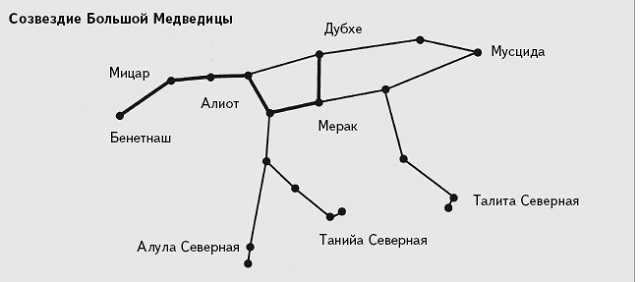

Let’s take a closer look at these celestial representatives.
Dubhe
Dubhe, the Alpha star of the Big Dipper, serves as the backbone of this constellation. It is easily identifiable as the second brightest star in the group. Despite its apparent proximity to our planet, Dubhe is actually located 120 light years away from Earth.
The star’s age is still unknown to scientists, but they have determined its stellar magnitude to be approximately 1.1 and its temperature to be around 4,700º.
The stellar creature’s “loin” or “groin” is not regarded as the most brilliant star within this constellation, despite its luminosity being 70 times greater than that of the Sun. Merak possesses a stellar magnitude of approximately 2.35 and has a mass equivalent to 2.6 times that of the Sun. Researchers affirm that both on the surface and within the core of this entity, not all hydrogen and helium have been consumed. Once these elements are entirely depleted, Merak could potentially experience further expansion. Furthermore, its surface will gradually undergo a cooling process.
Feqda
Feqda is the Arabic word for “thigh”. It is the sixth most luminous star in the constellation. Located at a distance of 110 light-years from Earth, Feqda has an estimated age of 320 million years. Scientists predict that it will remain visible in the night sky for many more years to come. The temperature of Feqda ranges from 9400 to 9600 degrees Celsius, and it has a stellar magnitude of approximately 2.42.
Megrez
Megrez, also known as the “base of the tail” or the “beginning of the tail,” is an incredibly faint star located in the bucket constellation. It can be found in front of the handle (neck) of the stellar object. This star is relatively young, with an age that has not yet exceeded 400 million years. With a stellar magnitude of 1.4 and a temperature of approximately 8000 degrees Celsius, Megrez is a fascinating celestial body. It is located a distant 80 light-years away from Earth.
Aliot
Or, as it is inaccurately translated, “curd.” It is located at the same distance as Megrez – 80 light years away. It is known as the most luminous star in the Med constellation. The surface temperature of this star reaches 10800 degrees.
Mizar
Also known as zeta on the astronomical chart or the belt in Arabic translation, it is part of the Medusa constellation. Mizar is the second brightest star after Aliot and is approximately 78 light years away. It is interesting to note that Mizar is paired with another star called Alcor in the constellation. Alcor is also quite bright but may be difficult to see clearly for individuals with poor eyesight as it blends in with Mizar.
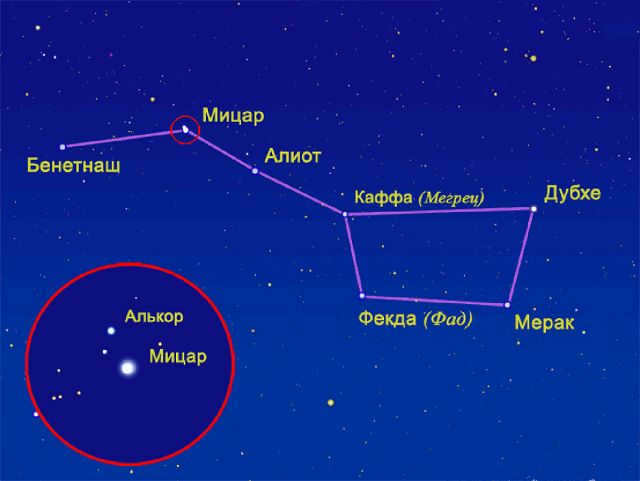
Benetash (Alkaid).
Benetash (Alkaid) is the third star in the handle (neck) of the constellation and also ranks third in terms of brightness. Some amateur astronomers refer to Benetash (Alkaid) as the starting point of the bucket, as it is located at the very edge. It is situated at a distance of approximately 100 light-years from Earth. However, what sets Benetash (Alkaid) apart from its “colleagues” is its exceptionally high temperature, reaching 22,000 degrees.
Objects situated beyond the Milky Way.
For contemporary scientists, the Big Dipper presents a valuable treasure trove. Why is that? It’s quite simple: it is home to unique astronomical entities that exist outside our own galaxy. However, these objects cannot be detected with the naked eye.
Bode Galaxy M81
This particular entity was named after the astronomer-scientist who first discovered it back in 1774 – I. Bode. To the naked eye, it appears as a slightly blurred and barely noticeable spot in the sky. However, with the aid of powerful binoculars or a telescope, one can observe the outer boundaries and central core of this galaxy.
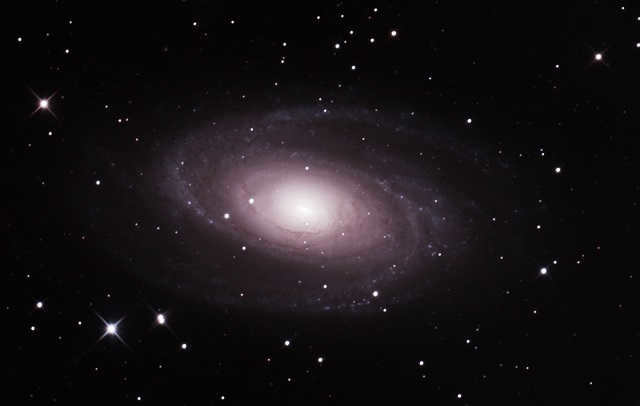
Its remarkable luminosity and symmetrical form set it apart. Scientists are particularly intrigued by the presence of a massive black hole located near the center of this galaxy, surrounded by numerous stars. Currently, researchers are studying whether this object has absorbed or will absorb nearby stars, and if there is a possibility of the black hole escaping the confines of the galaxy.
The Cigar Galaxy
The Cigar Galaxy, also known as M82, derives its unique name from its elongated shape. When captured in photographs by spacecraft, it bears a striking resemblance to a luxurious cigar. However, when observed through binoculars, it appears more like a dense beam of light. A more comprehensive examination of this galaxy requires the use of a significantly powerful telescope. The optimal period for observing the Cigar Galaxy is during the early or mid-spring season.

Located 12 million light years away from Earth, there is a remarkable phenomenon known as the Bode Galaxy. At the center of this galaxy lies a large and massive black hole. However, what sets the Bode Galaxy apart from others is the fact that scientists have actually witnessed the formation of new celestial bodies here.
Introducing the Owl Nebula
The Owl Nebula was first discovered by P. Meschen in 1781, although it wasn’t officially named until 1848 by Lord Ross. The reason behind its peculiar name is quite intriguing: the aristocrat was inspired by the two dark spots within the nebula, which resembled the eyes of a nocturnal bird.
Interestingly, the Owl Nebula can be observed using binoculars or any other basic optical device for stargazing. However, if you wish to catch a glimpse of the famous “eyes,” a telescope is required.
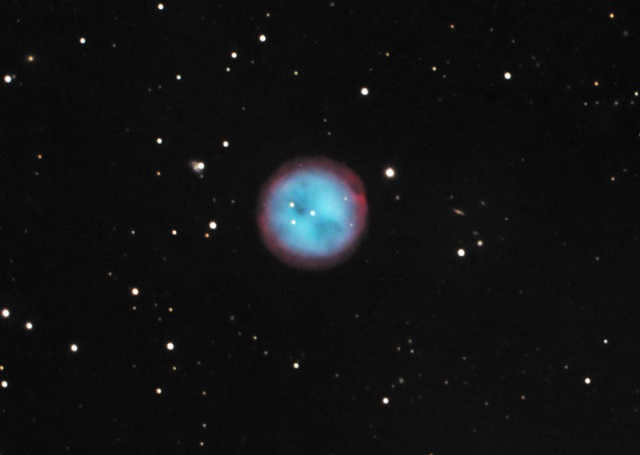
The Owl Nebula came into existence around 6000 – 6100 years in the past. Some experts even suggest that it might have formed 8000 or 9000 years ago. Scientists are currently working on determining the exact age of this celestial body. It is located at a distance of approximately 2025 to 2030 light years from our planet and the solar system.
Galaxy GN – z11
The detection of this star cluster happened relatively recently, back in 2016. It holds the title of being the farthest object ever observed in our Universe. Scientists estimate that it is receding from us at a speed just shy of the speed of light. Currently, its distance from us is a staggering 32 billion light years. In terms of size, this galaxy is approximately 25 to 30 times smaller than our very own Milky Way.
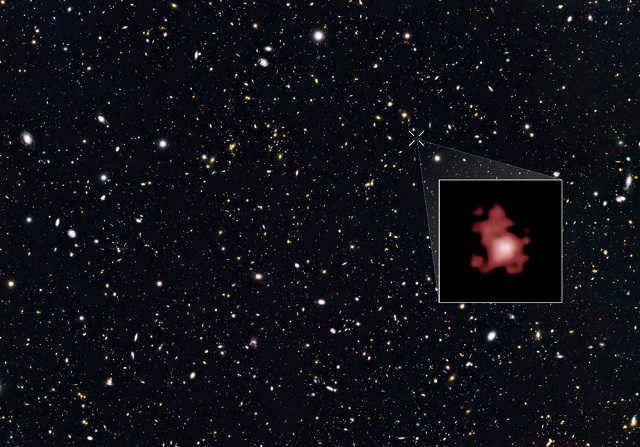
The Big Dipper: Debunking the Myths
As one of the oldest constellations known to humanity, the Big Dipper has inspired countless myths and legends across different cultures.
One of the most well-known versions is the Greek myth, which actually has two versions.
The first version tells the tale of Zeus, a renowned lover of beauty, who became infatuated with the daughter of a human king named Callisto. However, Zeus’ wife, who was enraged by her husband’s affair, sought to destroy Callisto. To protect his beloved, Zeus transformed her into a bear and placed her in the starry sky, ensuring that she would always be under divine surveillance.
After discovering her husband’s unfaithfulness, Hera opted to penalize both the mother and child. Callisto was transformed into a bear, and her son became a huntsman who nearly took the life of his own mother while in pursuit of prey. Zeus intervened and rescued both the woman and her son by placing them among the stars. Now, the mother and son are known as the Great Bear and the Little Bear, forever joined together in the nocturnal heavens, watching over one another.
Representation of the Constellation by Various Cultures
As mentioned before, the constellation known as the Big and Little Dipper has been recognized since ancient times. However, what makes it truly fascinating is the fact that each civilization depicted it in their own unique way. Interestingly, despite the variations, there were also similarities in its overall shape.
Now, let us explore a few examples of how different cultures represented this constellation.
Egyptians
The Egyptians are credited with the creation of a comprehensive constellation system that continues to be utilized by contemporary scholars. Interestingly, the Egyptians did not view the constellation of the Big Dipper favorably. In their belief system, it was closely linked to the bull, specifically the leg of the bull, which represented the god Seth. Seth was associated with war and disorder within the boundaries of Ancient Egypt.
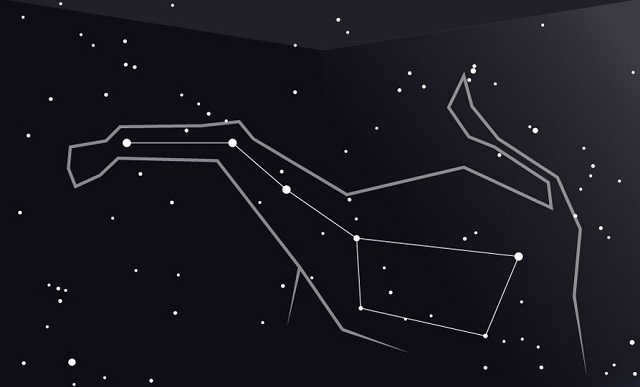
According to ancient tales, Seth harbored a deep hatred for his brother, Osiris, the deity of life and eternal existence. This intense animosity led Seth to commit a heinous act – he murdered his own sibling. As a consequence of his malevolence, Seth faced a dire punishment at the hands of his nephew, Horus, the son of Osiris. Following his victory over Seth, Horus severed his opponent’s leg and cast it skyward. This severed limb serves as a perpetual symbol of loss for the god of strife and disorder, and serves as a stark reminder to humanity of the consequences that arise from defying the divine.
These individuals possess a more intricate astronomical and astrological framework. As per their belief system, the celestial sphere is divided into precisely 28 sectors. The primary sector is the one housing Polaris, representing the emperor and symbolizing strength, authority, and sagacity.
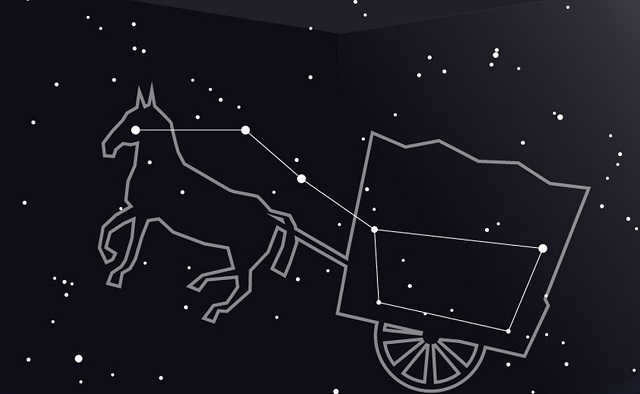
Based on a Chinese astronomical treatise, it is believed that the ladle’s 7 bright stars serve as the chariot for the esteemed emperor Shandi, allowing him to traverse the world. Another interpretation suggests that these stars represent the souls who act as guardians for the Heavenly Emperor, shielding him from any potential threats and difficulties.
People of India
Ancient India had a unique system of astronomy and astrology. Some scholars believe that this was greatly influenced by Ancient Greece and Ancient China. The night sky was divided into different sectors and the month was divided into lunar days, known as “lunar stands”. Constellations were also introduced into their system.

Furthermore, there exists only the indigenous significance. The priests believed that Polaris was the abode of the supreme god, Vishnu. The cluster of stars known as the Big Dipper was believed to be the incorporeal forms of seven wise men who taught ancient civilizations, imparting wisdom of the universe and earning the opportunity to achieve eternal life and reside alongside the supreme deity in the celestial realm.
The ancient Greek astronomers are officially credited with being the creators of the zodiacal system. Their work added around 48 constellations to the world’s body of knowledge, each of which was accompanied by a multitude of myths and legends.
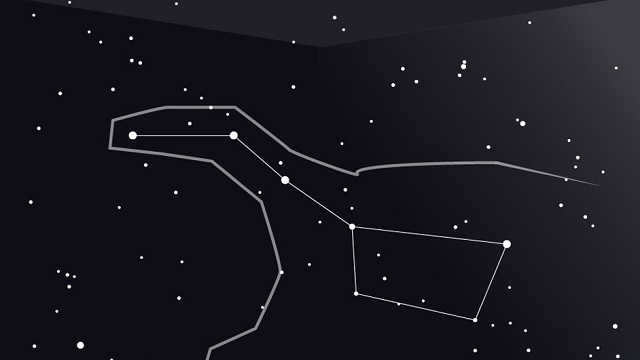
It is important to mention from the start that in ancient Greece, the constellation known as the Big Dipper was initially referred to as “the wagon” or “the boat of Charon”. It was only later on that legends about the celestial bear and her offspring started to emerge.
Native Americans
This star formation was connected to the act of hunting and capturing game. The trio of prominent stars in the celestial figure’s neck represent three skilled hunters in pursuit of an injured and fleeing animal.
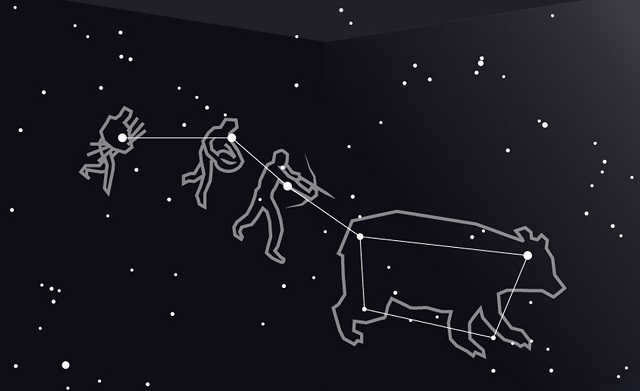
Why does the Big Dipper shift its position in the sky?
The misconception that the stars remain fixed in the sky has long been debunked. They actually change their position, resulting in a significantly different pattern each season. What causes this phenomenon?
Diurnal and annual rotation of the celestial sphere
It is common knowledge that the Earth orbits around the Sun. As a result, the positions of the stars in the sky undergo changes. The Big Dipper can serve as a prime example. During winter, the “handle” (or neck) tilts downward, while the “main part” shifts towards the northeast part of the sky.
However, in spring, the “main part” turns towards the west, and the “neck” (or handle) shifts towards the east. This represents the annual variation of the aforementioned asterism.


What about the daily movement? It is important to note that the Earth not only revolves around the Sun, but also rotates on its axis. As a result, the Big Dipper’s ladle shifts slightly across the sky each day, throughout the year. This phenomenon is particularly noticeable in regions experiencing polar nights, where it can be observed with the naked eye. In more typical areas, however, this difference is barely noticeable.
What is the center of rotation for the Big Dipper in the sky?
Due to the Earth’s rotation on its axis, all constellations, including the Big Dipper, create a circular path in the sky throughout the day. This raises the question of what the center of this circle is. There are two possible answers.
The first answer, from a scientific perspective, is that the stars revolve around the celestial poles, specifically the north and south celestial poles. These poles serve as the centers of rotation for the Northern and Southern Hemispheres, respectively.
The second answer is more applicable to the Northern Hemisphere. In this case, the center of rotation can be identified as the northern celestial pole, which is located near Polaris. Therefore, it can be said that all the stars in the Northern Hemisphere, including the Big Dipper, revolve around Polaris.
Discovering the Big Dipper
This particular constellation stands out from the rest as it can be easily identified in the night sky without the need for any specialized equipment. It can be spotted even by individuals who have never had an interest in astronomy before.
To simplify the task, during the summer and early autumn, this group of stars can be found in the northwestern part of the sky. In the spring, it can be seen directly overhead. During late autumn and early winter, it can be located in the northern region, stretching horizontally. In winter, it can be found in the eastern part of the sky.
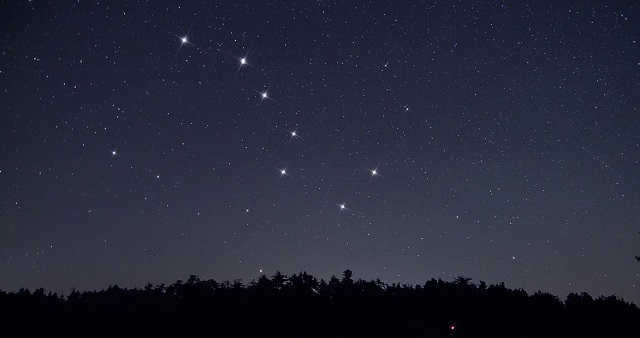
Asterism Ursa Major
The popular name for Ursa Major is the Great Bear. However, it’s important to note that the Big Dipper is not a separate constellation or a synonym. It is actually a part of the larger star cluster that forms the mythical beast.
In reality, the Big Dipper is a grouping of the seven brightest stars visible to the naked eye. This asterism serves as a helpful point of reference not only for travelers, but also for astronomers. It can be used to easily and quickly locate other constellations, such as Hydra, Gemini, both Leo constellations, Draco, and more.
How to Locate Polaris Using the Big Dipper
Polaris serves as a well-known reference point for travelers, allowing them to navigate their surroundings even without a compass.
So, how can you find Polaris? It’s actually quite simple. First, locate the distinct shape of the Big Dipper in the night sky. To help with orientation, the handle should be on the left side and the main part on the right. Take note of the far “wall” of the dipper. Both Dubhe (above) and Merak (below) can be found there. Draw an imaginary straight line that extends vertically from these two stars and mentally repeat this distance five times. At the end of this extended line, you will find Polaris!
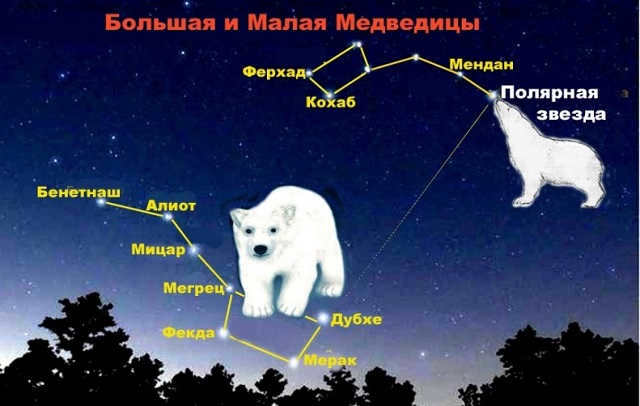
Utilizing the Big Dipper’s ladle for navigation
Once Polaris has been located, it becomes effortless to determine the other cardinal directions. An added benefit of using this method is the vast expanse occupied by the Big Dipper constellation. Its prominent presence makes it simple to navigate through the terrain and plan the next course of action, even in slightly cloudy conditions during the night.
Interesting facts about the Ursa Major
- Asterism Bucket and the Ursa Major are not the same. The asterism is a part of the entire constellation.
- The Ursa Major constellation is a real treasure trove for any astronomer! It contains a large number of space objects that are not well-studied by scientists. However, many of them can be observed using simple binoculars. If you have a telescope with medium resolution, you might even have the chance to make a discovery!
- This grouping of stars has served as a reliable guide for sailors and explorers throughout history. The Chinese even used it to accurately tell time.
- A star and a series of planets have been discovered within the boundaries of this constellation. In terms of structure and certain traits, this system closely resembles our own solar system. Some scientists speculate that it may support life.
A fascinating video about the constellation Ursa Major
- Star patterns
The constellation known as Ursa Major, or the Big Dipper, can be seen in the northern hemisphere of the sky. This group of seven stars resembles a ladle with a handle. The two brightest stars, Aliot and Dubhe, have a luminosity of 1.8 apparent sidereal magnitude. By using the two outermost stars (α and β) of this formation, it is possible to locate Polaris. The optimal visibility for observing this constellation is between the months of March and April. It can be seen throughout Russia year-round, except in the autumn months in southern Russia when the Big Dipper appears low on the horizon.
A brief overview

The constellation Ursa Major is situated in the northern hemisphere of the celestial sphere. It has been recognized by humans for millennia. It was identified by astronomers from Egypt, Babylon, China, and ancient Greece. It was included by Claudius Ptolemy in his treatise “Almagest” in the 2nd century. This work consolidated all astronomical knowledge of that era.
Ursa Major is comprised of the following seven stars:
- Dubhe (Alpha of Ursa Major), its name is derived from the Arabic phrase – “the back of the great bear”.
- Merak (β) means “loins” or “groin” in Arabic.
- Fekda (γ) – “thigh”.
- Megrez (δ), “base of the tail”. It is the faintest star among the stars of the Big Dipper.
- Aliot (ε) is known as the “curd” star in the constellation. It shines the brightest among all the stars in this group.
- Mizar (ζ) gets its name from the Arabic word for “belt”. Another star called “Alcor” can be found near Mizar. Interestingly, the ability to distinguish between these two stars is dependent on having good eyesight, with a maximum myopia of 1 diopter.
- Benetnash (η), also known as Alkaid, is the third brightest star in the Big Dipper. In Arabic, “Al-kaid banat nash” translates to “leader of the mourners”.
There are a total of seven stars in this configuration, forming a shape that resembles a bucket with a handle when connected by a straight line. Each star has its own unique name. Positioned at the top point of the bucket, opposite the handle, is a star known as Dubhe. It is the second brightest star among its celestial counterparts and is characterized as a multiple star. This means that from Earth, several stars appear as one due to their close proximity to each other.
Within this grouping, there are three stars in particular. The largest star is a red giant, indicating that its core has depleted all its hydrogen reserves and is undergoing a thermonuclear reaction on its surface. Eventually, it will transition into either a white dwarf or a black hole. The other two stars are Main Sequence stars, similar to our Sun.
At the base of the bucket, in alignment with Dubhe, you will find the star Merak. This particular star shines with great brilliance, being 69 times brighter than our Sun. However, due to the vastness of cosmic space, its true radiance may not be fully appreciated. If you continue to extend the straight line that connects Merak and Dubhe towards the constellation of the Little Bear, you will eventually arrive at Polaris. Positioned at a distance that is 5 times greater than the gap between these two luminaries.
The opposite extreme at the lowest point of the dipper is known as Fekda. It is a star that lies within the Main Sequence. On the other hand, the highest point of the dipper, directly opposite of Fekda, is called Meglitz, also known as Megrez. This particular star is the faintest of the group. It is nearly 1.5 times larger than our Sun and shines with a brightness that is 14 times greater.
Located at the start of the handle is the prominent star Aliot, which holds the distinction of being the most brilliant star in the constellation of the Big Dipper. In terms of brightness, it holds the 33rd position among all the visible stars in the night sky. As we move towards the end of the handle, we come across the third brightest star, with the second brightest being the star Mizar. In close proximity to Mizar, we find another celestial body known as Alcor, which can be observed by individuals with good eyesight. Legend has it that in ancient times, Alcor was used as a test of visual acuity for young boys aspiring to become sailors. If a young man could spot this star alongside Mizar, he was deemed fit to be enlisted in the ranks of sailors.
Actually, in the vast expanse of space, there are not just 2 stars, but a total of 6. These include the binary stars Mizar A and Mizar B, as well as the binary star Alcor. However, to the naked eye from Earth, only one large, bright point and a small point next to it are visible. These are the delightful surprises that the universe occasionally presents.
And lastly, we have the farthest star known as Benetnash or Alkaid. All of these names have their origins in the Arabic language. In this case, the literal translation means “leader of the mourners”. So, Alkaid is the leader, and Banat represents the mourners. This celestial body is the third brightest, following Aliot and Dubhe. It holds the 35th position among the most luminous stars in the sky.
Additional items in the Ursa Major Constellation

Aside from the Big Dipper, there is also a group of stars known as the “Three Leaps of the Gazelle” that can be seen in the constellation of the Big Dipper. This group resembles three pairs of stars.
The pairs are as follows:
- Alula North South (ν and ξ),
- Taniyah North and South (λ and μ),
- Talitha North and South (ι and κ).
Near Alupa Severnaya, there is a red dwarf star called Laland 21185. This star is not easily visible to the naked eye, but it is actually the sixth closest star system to the Sun, even closer than the stars Sirius A and B.
Those who have an interest in observational astronomy know that this constellation includes the galaxy M101, also known as the Helix, along with the galaxies M81 and M82. These two galaxies are believed to be the central point of the closest group of galaxies, which is approximately 7 million light-years away. In contrast to these faraway objects, the astronomical entity M 97, commonly referred to as the “Owl,” is situated within the Milky Way and is hundreds of times closer. The “Owl” is actually one of the largest planetary nebulae.
Located in the middle, between the initial and subsequent “gazelle jump”, there exists a small yellow dwarf, resembling our Sun, specifically at the 47th position. Between the years 2000 and 2010, astronomers detected three gas giants orbiting around this star system. Additionally, this particular stellar system bears a striking resemblance to our own Solar System and holds the 72nd spot on the list of potential candidates for the NASA Terrestrial Planet Finder mission, which aims to discover Earth-like planets. As a result, this constellation holds significant interest for those passionate about astronomy.
In the year 2013 and again in 2016, two of the most remote galaxies, namely z8 GND 5296 and GN-z11, were identified within this constellation. The light from these galaxies, captured by scientists, has traveled a remarkable distance of 13.02 billion years (z8 GND 5296) and 13.4 billion years (GN-z11), respectively.
The Owl Nebula is an intriguing celestial object within our galaxy, featuring two adjacent dark spots that resemble the eyes of an owl, hence its name. This nebula has an estimated age of around 6,000 years and is located approximately 2,300 light-years away from our solar system.
However, even more captivating is the Big Dipper constellation, which is considered a potential source of extraterrestrial intelligence. Within this region of space lies a star known as 47UMa, a yellow dwarf with a planetary system strikingly similar to our own. To date, at least three planets have been discovered orbiting this star. In 2003, a radio message was sent to 47UMa in the hopes of making contact with intelligent beings. The search for extraterrestrial life continues, driven by the persistent and always fortunate Earthlings.
What is the method of locating the Big Dipper in the heavens?
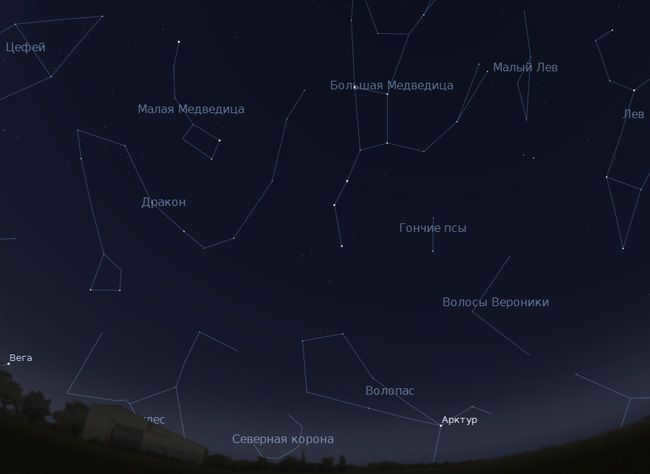
If you wish to acquire the knowledge of navigating through the celestial expanse, your primary objective should be to locate the constellation of the Big Dipper. Despite its proximity to Polaris, it is not so near that it remains fixed in the same position in the sky.
The Big Dipper is most easily identifiable during the autumn and winter seasons. During this time, the asterism can be found in the northern region, not too high above the horizon, and in a familiar orientation.
As winter comes to a close, the Big Dipper’s position in the evening sky undergoes a change. The seven stars of the dipper gradually shift towards the east, causing the Big Dipper itself to stand upright on its handle.
It is not surprising at all. Remember that every single day all the stars create circles around the pole of the world, indicating the Earth’s rotation on its axis. However, throughout the year, the stars form an additional circle, representing the Earth’s movement in orbit around the Sun. The stars of the Big Dipper are not an exception – they shift from the lowest point, making the bucket appear as if it is positioned “on the fringes”.
In the middle of spring, the Big Dipper reaches its highest point in the evenings, directly above your head! During this time, it is in an inverted position in relation to Polaris. The dipper faces west, while the handle of the dipper faces east.
If you reside north of Moscow, the most challenging time to locate the Big Dipper in the celestial sphere is during the summer season when the nights are brief. During this period, the constellation can be found in the western direction, with the ladle slanting downwards and facing north.
How can one find Polaris using the Big Dipper?
Now, let’s explore the method of finding Polaris with the help of the Big Dipper. The process is quite simple. Take the two outermost stars of the dipper, namely Dubhe and Merak (referred to as the alpha and beta of the Big Dipper), and mentally connect them with a straight line. Next, extend that line by a distance equal to five times the distance between Merak and Dubhe.
You will then come across a star whose brightness is approximately similar to that of the stars within the dipper. This is none other than the renowned Polaris, also known as the “iron nail” by the Kazakhs, due to its immobility in the Earth’s sky.
Discovering the Mysteries of the Big Dipper: Various Interpretations Across Different Cultures
Ancient Egypt: The Stellar Symbol of the “Bull’s Thigh”
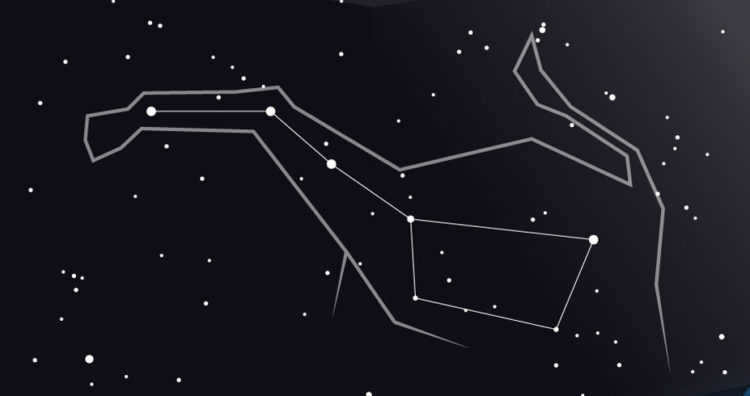
The Carriage of Emperor Shandi in China.
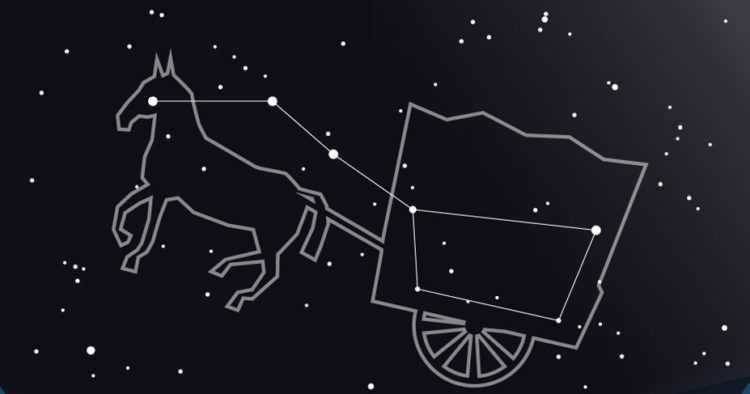
Ancient Chinese astronomers divided the sky into 28 vertical sectors known as “houses.” These houses represent the path of the Moon as it travels each month. This concept is similar to how the Sun passes through the signs of the Zodiac in Western astrology, which was influenced by the Egyptians’ 12-sector division. In the center of the sky, like the emperor in the capital, the Chinese placed Polaris, a star that had already taken its rightful place. The seven brightest stars of the Big Dipper are also located nearby, within the Purple Enclosure. This enclosure is one of three that surrounds the “royal” star’s palace. These stars can be described as the Northern Bucket and their orientation corresponds to the changing seasons. They are also considered part of the carriage of the Heavenly Emperor Shandi.
Seven Wise Men of India
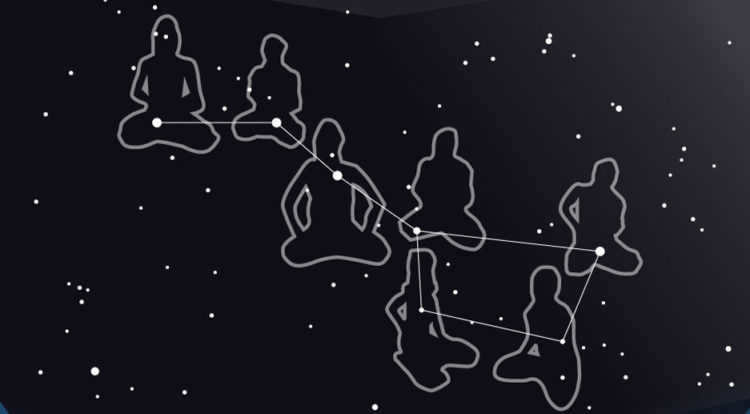
Observational astronomy in ancient India did not reach the same level of advancement as mathematics. Its principles were heavily influenced by both Greece and China. For instance, the 27-28 “stands” (nakshatras) that the Moon passes through in about a month bear a striking resemblance to the Chinese lunar “houses”. Additionally, Hindus placed great significance on Polaris, which, according to Vedic experts, is the dwelling place of Vishnu himself. The asterism known as the Bucket, located below Polaris, was believed to be Saptarisha – the seven sages who were born from the mind of Brahma and are considered the ancestors of the current era (Kali-yuga) and all beings within it.
Greece’s “Medusa”
“Medusa” from Greece
The Greek “Medusa”
Greece’s legendary “Medusa”
The mythological creature “Medusa” in Greece
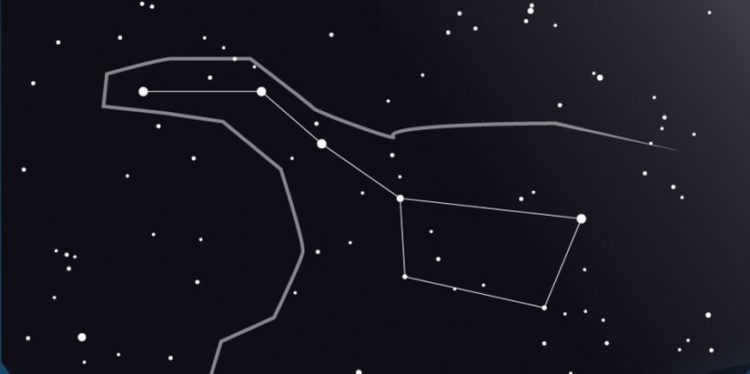
The constellation known as the Big Dipper is included in Ptolemy’s star catalog from around 140 BC, although it is mentioned even earlier by Homer. The ancient Greek myths provide various explanations for its appearance, but they all agree that the bear represents the beautiful Callisto, who was a companion of the goddess Artemis. One version of the myth states that Zeus, known for his amorous exploits, seduced Callisto, which angered his wife Hera and Artemis herself. To protect his lover, Zeus transformed Callisto into a bear, and she wandered in the mountain forests for many years until her own son, who was fathered by Zeus, encountered her during a hunt. Once again, Zeus had to intervene. In order to prevent the murder of his own child, he brought both Callisto and their son to the heavens.
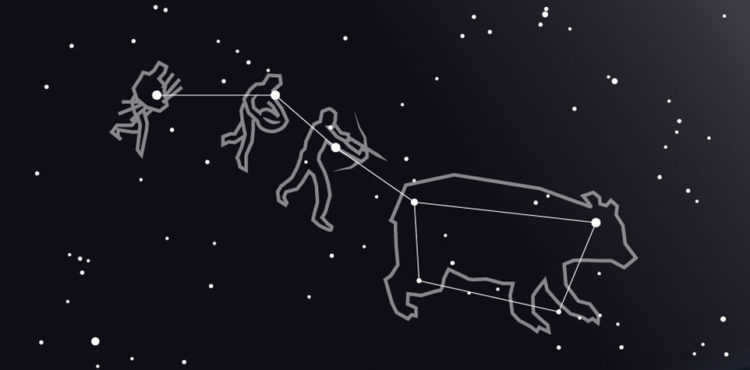
The Indians seemed to have a deep understanding of wild animals, as evidenced by the Iroquois legend of the origin of the asterism. According to this legend, the “celestial bear” in the night sky is depicted without a tail. Instead, the three stars that form the handle of the Big Dipper represent three hunters who are in pursuit of the bear. Aliot is shown drawing a bow with an arrow embedded in it, Mitzar carries a cauldron for cooking the bear’s meat (represented by the star Alkor), and Benetnash carries an armful of kindling to light the hearth. As the Bucket constellation turns and sinks low on the horizon during the fall, the blood from the wounded bear drips down, staining the trees with mottled colors.
Fascinating information
- The nearest among the most brilliant stars in the Big Dipper– South Alula or xi star of the Big Dipper. It is a stunning binary star that can be distinguished into components in a telescope with a lens larger than 80mm. Both components have similar characteristics to the Sun and each also has a companion, a frigid red dwarf! The distance to ξ of the Big Dipper is 29 light-years. A little further away is the star θ – 44 light-years from the Sun. Well, the most distant from the brightest stars of the constellation is the red giant μ of the Big Dipper, one of the stars in the front "paw" of the Dipper. Its distance is 249 light years.
- The flag of Alaska prominently features the constellation of the Big Dipper, which is also depicted on the flag of White Sea Karelia and used by Irish left-wing radical organizations.
- During the day, the Big Dipper can be observed and appreciated on interactive constellation maps, where you can explore other constellations in detail.
- Undoubtedly, the vast array of celestial objects found in the magnificent Big Dipper offers a wealth of treasures for any dedicated astronomy enthusiast! Within this celestial region, there exists an extensive assortment of captivating sights that can be observed using compact telescopes. These include double and variable stars, a selection of luminous galaxies and numerous more elusive galaxies, a dispersed star cluster, and even a planetary nebula. Attempting to condense comprehensive descriptions of each of these objects within a single article would prove impossible. As a result, we have made the decision to publish individual articles dedicated to exploring and observing the fascinating wonders of the Big Dipper.
August is well-known for its stunning, almost like adorned with sparkling gems, celestial canopy. During the weekend, while paddling on the Snigiryovka river, I managed to capture some breathtaking shots of the starry sky at a bend in the river on a lofty cape, accompanied by the enchanting melodies of the wargan and tambourine. And today, I am delighted to share with you the tale of the magnificent Big Dipper constellation, which turned out to be an absolute triumph.
Behold, one of the photographs reveals the constellation’s bucket fitting perfectly within the window created by the leaves of a nearby tree and the tops of pine trees on the opposing river bank.
If anyone finds it challenging to discern it at first glance, fear not! In the following picture, I have thoughtfully traced the constellation’s outlines with lines for easier identification.
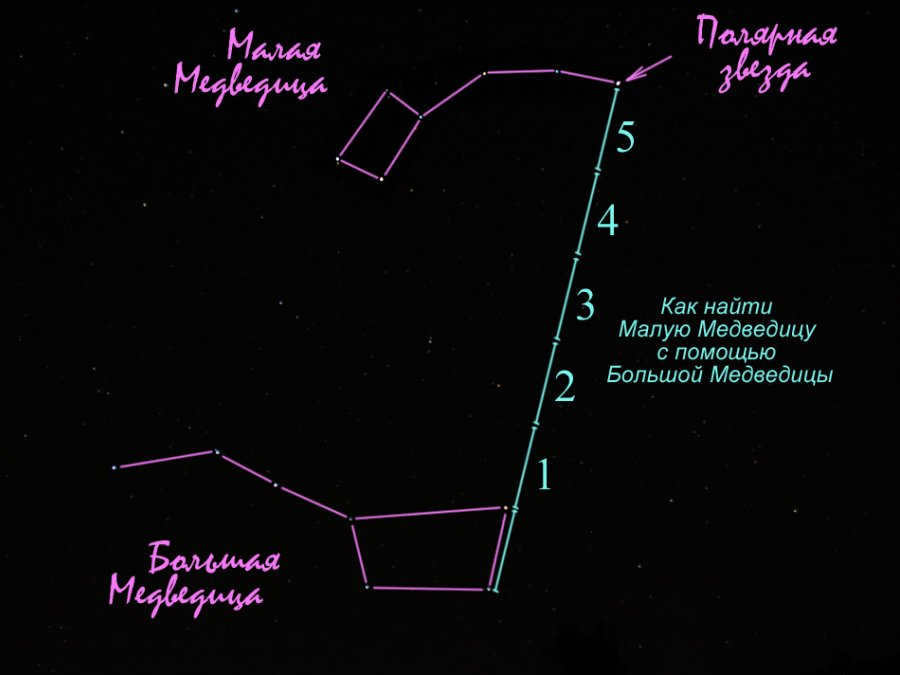
What a magnificent sight! The sun is slowly sinking below the horizon, casting a gentle glow on the surrounding landscape. The night sky is adorned with countless shimmering stars, like precious diamonds. The moon, nearly full, peeks out from behind the trees, casting a soft silver light on their tops.

The blaze is dwindling, casting a crimson glow on the branches of the evergreen tree, beside which we found solace atop a towering precipice overlooking the meandering Snigiryovka river. The enchanting melodic tones of a wargan and a tambourine crafted from authentic leather, carefully dried in the warmth of the flames, drift away into the desolate void.
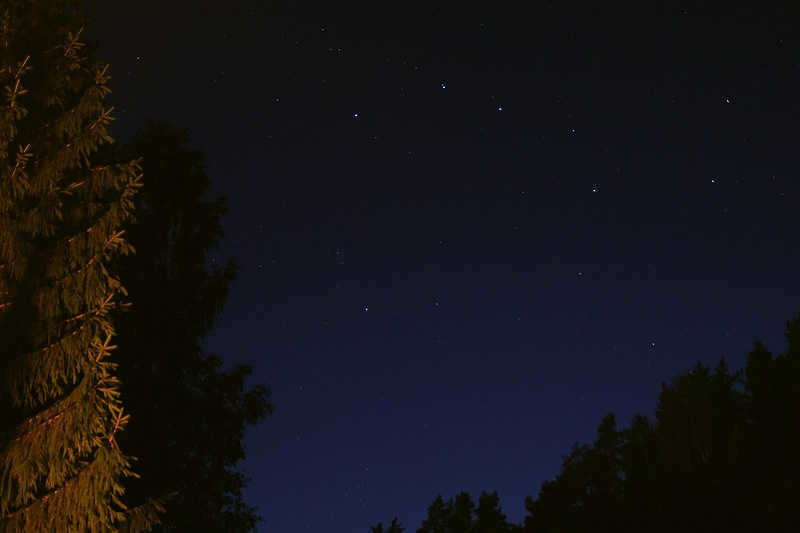
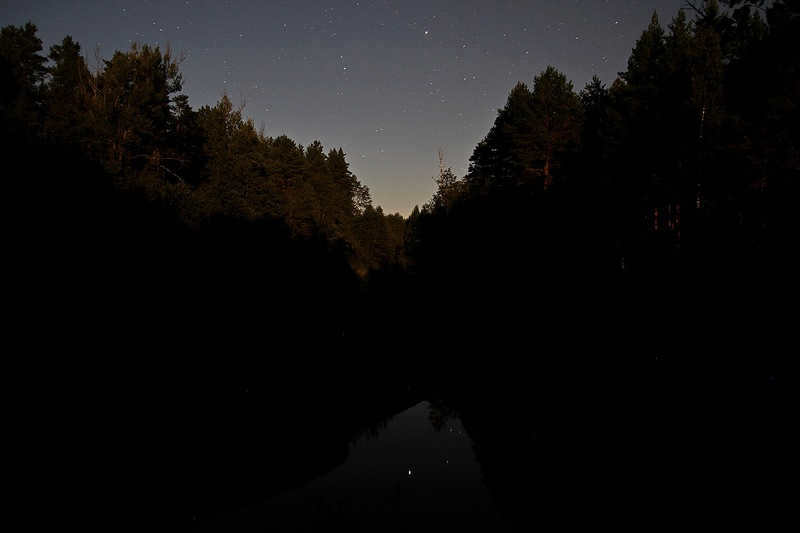
This marks the end of our poetic detour and let us now return to our celestial formation. Throughout history, it has been recognized under various names by different civilizations. In ancient Russia, it was referred to as the Elk, while other cultures recognized it as the Plow, Wagon, Seven Wise Men, and more. According to Greek mythology, the lovely nymph Callisto was transformed into a Bear by Zeus to shield her from Hera’s wrath. In Chinese astronomy, the seven stars of the dipper are known as the Northern Bucket (Beidou). In ancient times, the handle of the bucket nearly pointed towards the pole and was employed by the Chinese for timekeeping. The Latin designation for the constellation of the Big Dipper is Ursa Major. This constellation even appears on certain flags, such as the flag of Alaska alongside the Polar Star, the flag of Irish radical organizations (IRA), and the ancient flag of White Sea Karelia.
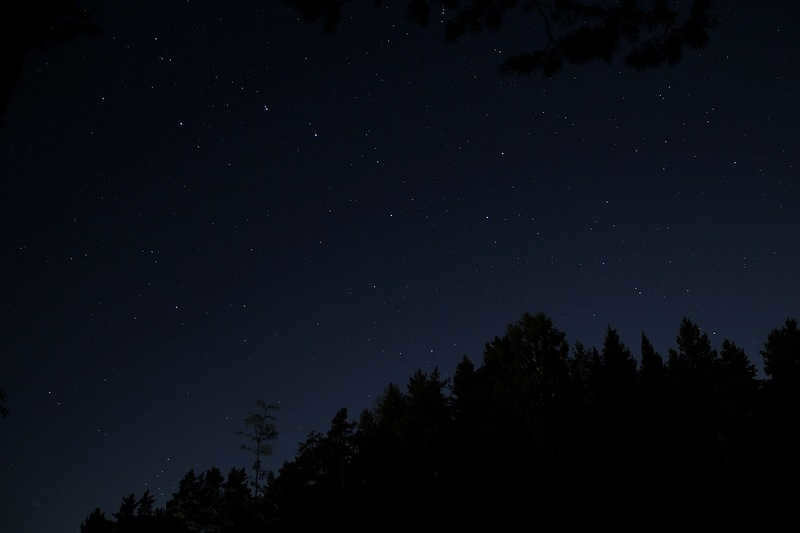
The constellations that form the Big Dipper are indicated on this chart. Historically, they have been designated using letters from the Greek alphabet, with the brightest star being labeled as alpha and subsequent stars named in descending order of brightness. However, this pattern is not followed in the case of the Big Dipper, as epsilon is actually brighter than alpha. Furthermore, each individual star within the dipper has its own unique name. Like many other stars, these names have Arabic origins, as Arab culture played a crucial role in bridging the intellectual gap between the decline of the Roman Empire and the Renaissance. Now, let’s examine each star in the Big Dipper more closely.
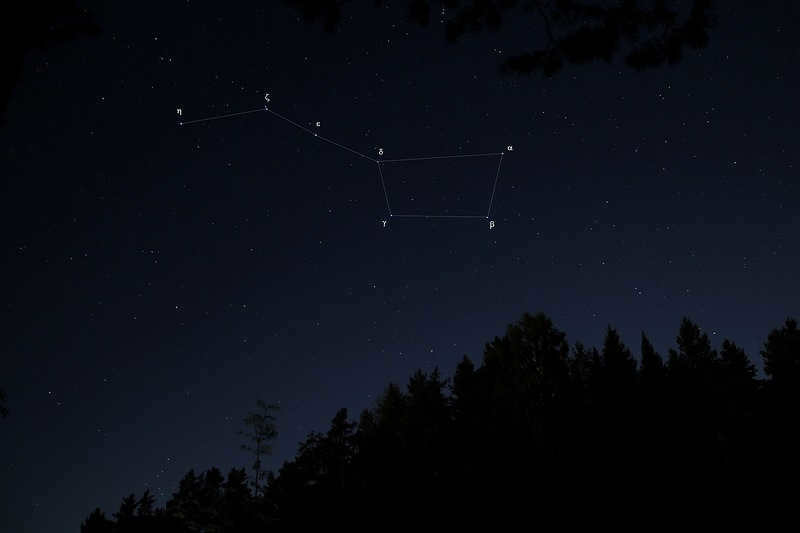
α, Dubhe. The name α, Dubhe comes from the Arabic ahr ad-dubb al-akbar, which means “back of the big bear”.
β – Merak is known as “loins”. In its star system, it shines 69 times brighter than the sun.
By using these two stars, it is possible to locate Polaris, which points north. To accomplish this, you can mentally draw a line through the two stars (Dubhe and Merak) of the “wall” of the bucket, opposite the “handle”. This line should be set aside five times the distance between these extreme stars. Polaris is approximately located at the end of this line. The direction to Polaris is the same as the direction north, and its height above the horizon corresponds to the latitude of the observer.
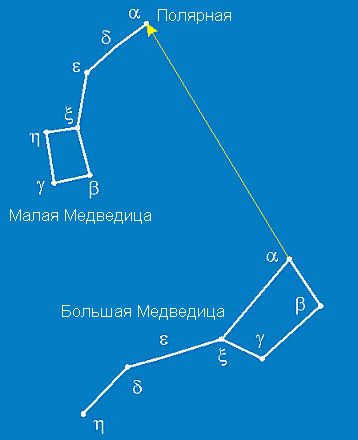
γ – Thekda. – “hip.”
δ is Megrez. – “root” (the beginning of the tail). It is the faintest star in the constellation Ursa Major, with an apparent stellar magnitude of +3.32. It is located 81 light-years away and is about one and a half times larger and heavier than the Sun, while being 14 times brighter than it.
ε (epsilon) – Alioth – is the brightest star in the constellation Ursa Major, 0.05 magnitudes brighter than Dubhe. It should technically be the alpha, but historically it is not. It is the 33rd brightest star in the visible part of the sky and has been historically used in maritime navigation.
ζ – Mizar. – “girdle” or “loincloth.” Another star called Alcor can be seen next to Mitzar by individuals with excellent eyesight. The ability to see Alcor has traditionally been used as a test of visual acuity. This pair is also known as the “Horse and Rider” and is the most well-known binary star system. The full-size images on this page also display both stars.
There is a legend that suggests in ancient Egypt, young boys who could distinguish between these stars were recruited into the pharaoh’s elite troops. This served as evidence of their sharp eyesight. Variations of the legend include Greek archers or Indian hunters. However, there is no confirmation of the authenticity of these claims. Furthermore, Mizar and Alcor can be easily distinguished as individual stars even with average visual acuity.
η (this one) is known as Benetnash or Alkaid. The name Benetnash is derived from the full Arabic name al-qaid banat nash, which translates to “leader of the mourners.” This name is based on the poetic representation of the constellation of the Big Dipper in Arabic folklore, where it is seen as a funeral procession with mourners and a leader. The constellation is symbolized by a funeral procession, with mourners leading the way and a funeral stretcher following behind.
Benetnash is the third brightest star in the constellation and ranks 35th among the brightest stars in the sky. It is located approximately 100 light-years away from the Sun. With a surface temperature of 22,000°K, it is one of the hottest stars visible to the naked eye.
This marks the conclusion of my celestial exploration. Please take a moment to peruse the report on my recent adventure of canoe rafting along the river Snigiryovka. Be aware that the link is not yet active as the report is still undergoing finalization.
Contents: Introduction, Theoretical Part, Practical Part, Conclusion, List of References, Appendix
Expanding students’ understanding of the world, specifically the celestial sky.
The study focuses on the constellation “Ursa Major”. Its objective is to develop a quiz with information about the constellation. The hypothesis is that this collected information will aid in recognizing the constellation in the night sky and understanding its history.
Purpose of the project:
The main goal of this project is to organize and facilitate a quiz for the 2 “c” class, focusing on the fascinating topic of “The Big Dipper constellation”. The primary objective is to stimulate and enhance the students’ cognitive and intellectual abilities through interactive learning.
Objectives:
1. To gather relevant information from various literary sources and the internet, ensuring a comprehensive understanding of the topic; 2. To introduce students to the fundamental concept of “constellation” and its significance; 3. To provide students with an in-depth understanding of the historical background and significance of the “Big Dipper” constellation; 4. To successfully execute and conduct the quiz in the 2 “c” class, focusing specifically on the captivating topic of the “Big Dipper” constellation.
Methods of investigation:
Gathering data from written sources and the internet; – Analyzing the gathered data; – Administering a quiz in the 2 “c” class.
Theoretical aspect.
The constellation known as the Big Dipper is the third largest in terms of area, (following Hydra and Virgo), and is composed of seven bright stars that form the well-known Big Bucket.
The Big Bucket is utilized for timekeeping purposes. In the evening, the Bucket is filled with “water”, and if half of the “water” is emptied, it indicates that it is close to midnight. By morning, there is hardly any “water” left in the Bucket. Slide 15
The flag of Alaska features the representation of the Big Dipper constellation.
Adorning a blue background are eight golden (yellow) five-pointed stars, with seven of them forming the image of the Big Dipper and the remaining star representing Polaris in the upper right corner. The Big Dipper is a symbol of strength, while Polaris symbolizes the north, which is significant as Alaska is the northernmost territory of the United States. Slide 17
We organized a quiz in the 2 “c” class focusing on the subject “The Big Dipper constellation”. A total of 30 students participated in the quiz. Slide 18
Following the completion of the quiz, we created a table:
Quiz Questions:
1. What is the common name for the Big Dipper? A) cup, B) ladle, C) jar. 2. The Big Dipper is… A) a constellation, B) a star, C) a planet. 3. In terms of area, where does the constellation rank? A) first, B) third, C) second. 4. How many stars make up the constellation? A) 3, B) 9, C) 7. 5. Which hemisphere is the Big Dipper located in? A) northern, B) southern, C) western. 6. During which season are the best conditions for viewing the Big Dipper? A) fall, B) spring, C) winter. 7. Draw the Big Dipper. On cloudless nights, it is easy to locate the large dipper of the Big Dipper when looking up. However, many people find it difficult to find the Little Dipper as its stars are quite dim and the brightness from street lamps, advertising structures, indoor lighting, and other artificial light sources in the city interfere with the natural nighttime environment. The night sky is poorly visible due to urban illumination, so it is best to enjoy the beauty of the stars in open spaces where buildings and artificial lighting do not obstruct the view. Even the light from the moon can interfere, overshadowing the faint stars of the desired constellation. The best place and time to observe the stars in the sky would be a moonless night in a steppe area in the northern hemisphere. Although the Little Bear constellation is small and its stars are not very bright, its location in the sky near the North Pole is notable. It consists of 25 stars that are large enough to be seen without any aids on a clear moonless night. The constellation includes Polaris, which is almost exactly located at the North Pole and is therefore convenient for orientation. Due to the gradual shift of the Earth’s axis, the situation will change over time and another star will indicate the northern direction. However, for the next 1200 years, we can confidently use the Little Bear as a reference point by locating the tip of the handle of its dipper. Despite having 25 stars, the constellation is recognized by its seven largest stars, which form a memorable figure in the sky resembling a ladle, with the polar star at the end of the handle. It is visible in the Russian territory throughout the year and serves as an excellent landmark for studying the starry sky.
Points of Reference for Locating the Little Dipper

To locate the Little Dipper, you must:
- Be familiar with the appearance of the constellation;
- Understand that the Little Dipper consists of only three relatively bright stars, which requires some expertise;
- Know the reference points near which the desired stars are positioned in the sky.
Starting the search from the brightest star in the Ursa Minor constellation, Polaris, is the easiest method.
The Big Dipper’s handle serves as a reference point. It should not be challenging to locate it, even for beginners.
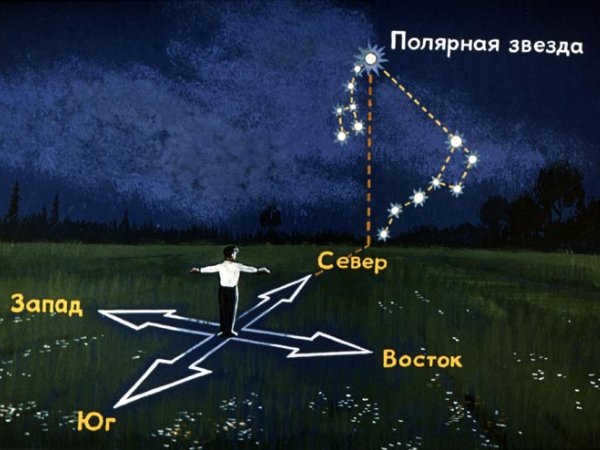
Everything ultimately relies on one’s vision:
- Locate the constellation Ursa Major: during winter and autumn, it descends to the horizon in the north; during summer, it can be found in the west, hanging with the handle pointing upwards; and in spring, it stands vertically in the east with the handle pointing downwards.
- Visualize a line extending upwards from the bowl of the ladle, using the two stars on the side of the ladle as reference points (a and β of Ursa Major).
- In a similar manner, mentally mark five times the distance between a and β on this line.
- To locate a star of similar brightness in the designated area of the sky, you will find Polaris, which marks the end of the handle of the Little Dipper. The handle of the small dipper will curve in the opposite direction as it reaches towards the Big Dipper.
In urban areas with excessive light pollution, it is only possible to see three stars of the dipper, including Polaris.
The visibility of the other stars is significantly hindered, and sometimes they are not visible at all due to the excessive ambient light. Therefore, it can be challenging for inexperienced individuals to identify the correct group of stars immediately. However, with some practice, locating the dipper will become easier, especially since the handle of the dipper is attached to Polaris, around which it rotates like a tether.





